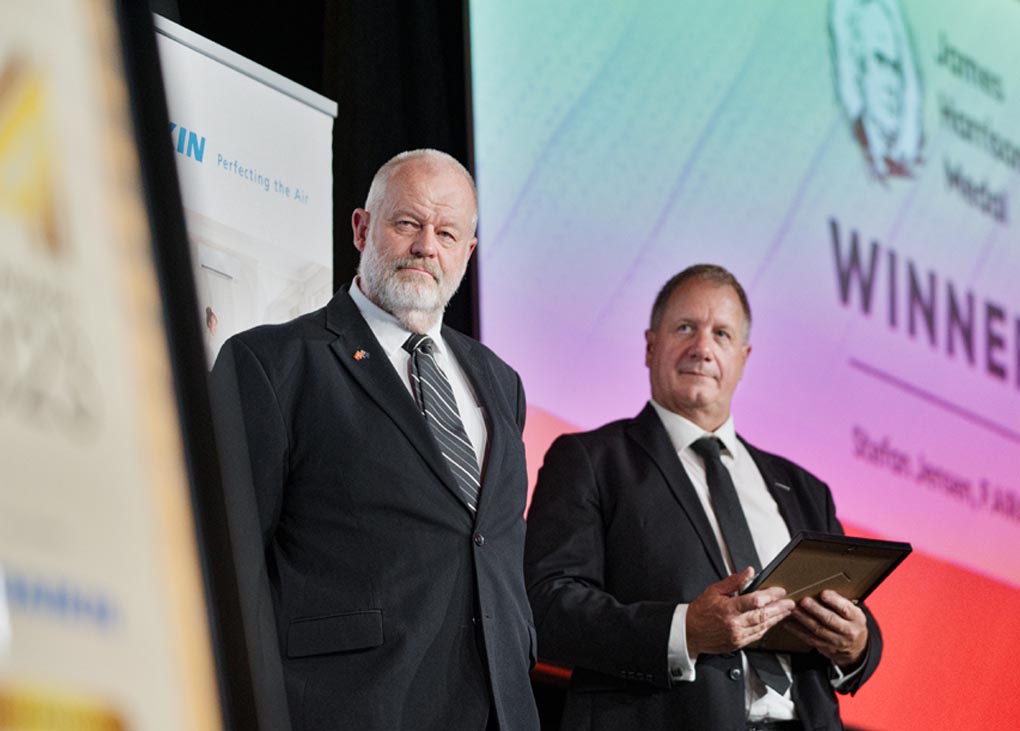IIR weighs in on refrigeration set point debate
The International Institute of Refrigeration (IIR) has released a position paper on frozen food set points.

The issue of set point temperatures for frozen food has been hotly debated since the IIR’s Centre for Sustainable Cooling released a report titled Three Degrees of Change in November 2023.
The report examined the current industry standard set point of -18°C, looked at cases where a shift to -15°C could be appropriate, and discussed the potential flow-on effects in terms of both energy savings and food waste. It also offered advice to help policymakers decide whether to make the shift or not based on their circumstances.
While that initial report made nuanced findings about the viability of the 3°C increase, some subsequent public campaigns – including the Move to -15°C Coalition – have pushed for universally changing set points in cold storage facilities to -15°C. These campaigns have sparked criticism from industry leaders, who say they lack understanding of the fundamentals of refrigeration.


The IIR’s position
The newly released position paper makes several findings based on research by IIR members. The shift from −18°C to −15°C for frozen food storage is expected to:
- Reduce energy consumption by approximately 10%
- Reduce the shelf life of frozen foods with respect to sensory quality changes by around 30%, with one study of the −15°C set point showing the vitamin C content of spinach decreases below critical threshold values after three months of storage
- Result in restricted acceptance in terms of temperature fluctuation during frozen storage, requiring thicker packaging solutions that result in a lower occupation ratio of food products in frozen storage and a rise in packaging weight
- Result in food wastage if the food industry reduces the shelf life presented on the packaging.
Taking these findings into account, the position paper recommends:
- Maintaining the existing set point of −18°C for high-sensitivity products
- Considering a 3°C increase in storage temperature with upward temperature fluctuation of 1°C for medium-sensitivity products
- Considering a 3°C increase in storage temperature with upward temperature fluctuation of 3°C for low-sensitivity products.
The realities of a 3°C shift
Dr Michael Riese, M.AIRAH, from Cold Logic sits on the AIRAH national board and is also a member of the Institute’s Special Technical Groups focusing on refrigeration and commissioning. In the summer 2024–25 issue of HVAC&R News, Riese penned a column critical of public campaigns to raise set point temperatures, arguing that the shift wouldn’t save much energy and would cause potentially serious problems down the line.


Riese believes the IIR’s recent position paper supports his argument.
“The findings of the IIR review clearly reiterate that a general increase of cold storage temperature is not suitable across the board,” Riese says. “While it can be demonstrated that there is room for some products to be stored at increased temperatures, this varies from product to product and between physical location and ambient temperature conditions.”
In his column, Riese pointed out that adjusting temperatures in cold storage facilities isn’t as simple as changing the thermostat. He argued that the design of a typical facility means that, even if most rooms were adjusted to -15°C, having just one room operating at -18°C would require a lower suction temperature across the board, negating most theoretical energy savings.
In response to the IIR’s paper, Riese points out further sustainability issues that could arise from a set point increase.
“There are clear possibilities to achieve energy savings for the cold storage facility and owner,” Riese says. “But if we take the circular economy into consideration, the increase in thicker packaging and tighter control of transport refrigeration will negate some – if not all – of the savings made in the first place.”
The bigger picture
Stefan Jensen, L.AIRAH, is the Managing Director of Scantec Refrigeration Technologies and the 2023 winner of AIRAH’s James Harrison Medal for lifetime achievements in the industry.
Jensen agrees that a blanket shift to -15°C is not the answer, pointing out that improved plant design and retrofitting outdated facilities would produce much higher energy savings than adjusting set points.
“Very little attention, if any, is being paid … to what competent refrigerating plant designers can do to make practical refrigeration cycles much more efficient,” Jensen says. The IIR/IIF study is academic in nature and appears to assume that energy savings originate from changing cycle conditions only.”


Jensen points to a conversion of a refrigeration facility that uses ammonia (NH3) as its refrigerant. The refrigeration system was upgraded from an older NH3 liquid overfeed design to a modern dry expansion NH3 design, with no change to any other systems within the facility.
He says the annualised energy savings for the 43,000 m3 cold store – which performs blast freezing – amount to 2,600 MWh, translating to a 65% reduction in energy consumption, although he notes that this might decrease to around 50% during summer.
“These and other similar upgrade projects are generally being overlooked by IIR, IIAR, and many other similar organisations worldwide,” Jensen says. “There is no doubt that millions of centralized NH3 plants with liquid overfeed consume several times more energy than they need to.”
Energy saving alternatives
Riese offers some alternative measures for saving energy in cold storage facilities:
- Updates to control systems to be able to deal with part loads
- Better understanding of system behaviour by owners and operators
- Better control of incoming product temperatures to avoid temperature pull-down loads
- Tight controls of heat ingress through building fabric and openings.
“These all have the potential to make significant impacts on energy consumption already, without the need to change storage set points,” Riese says.
“These options are already a real possibility, but require owners/operators to listen to subject matter experts, rather than jumping onto slogans that sound great but do not address underlying problems.”
PREV
NEXT
Comments
Advertisements
Recent news
- ARC unveils streamlined reporting tool
- Aiming high for cooling tower efficiency
- RAC teaching team recognised at RMIT Awards
Latest events
- Melbourne School of Design to host ASA2025 conference
- HVAC&R industry’s finest shine at 2025 AIRAH National Awards
- Nominations open for ARBS Awards 2026
 Nick Johns-Wickberg
Nick Johns-Wickberg

Leave a Reply